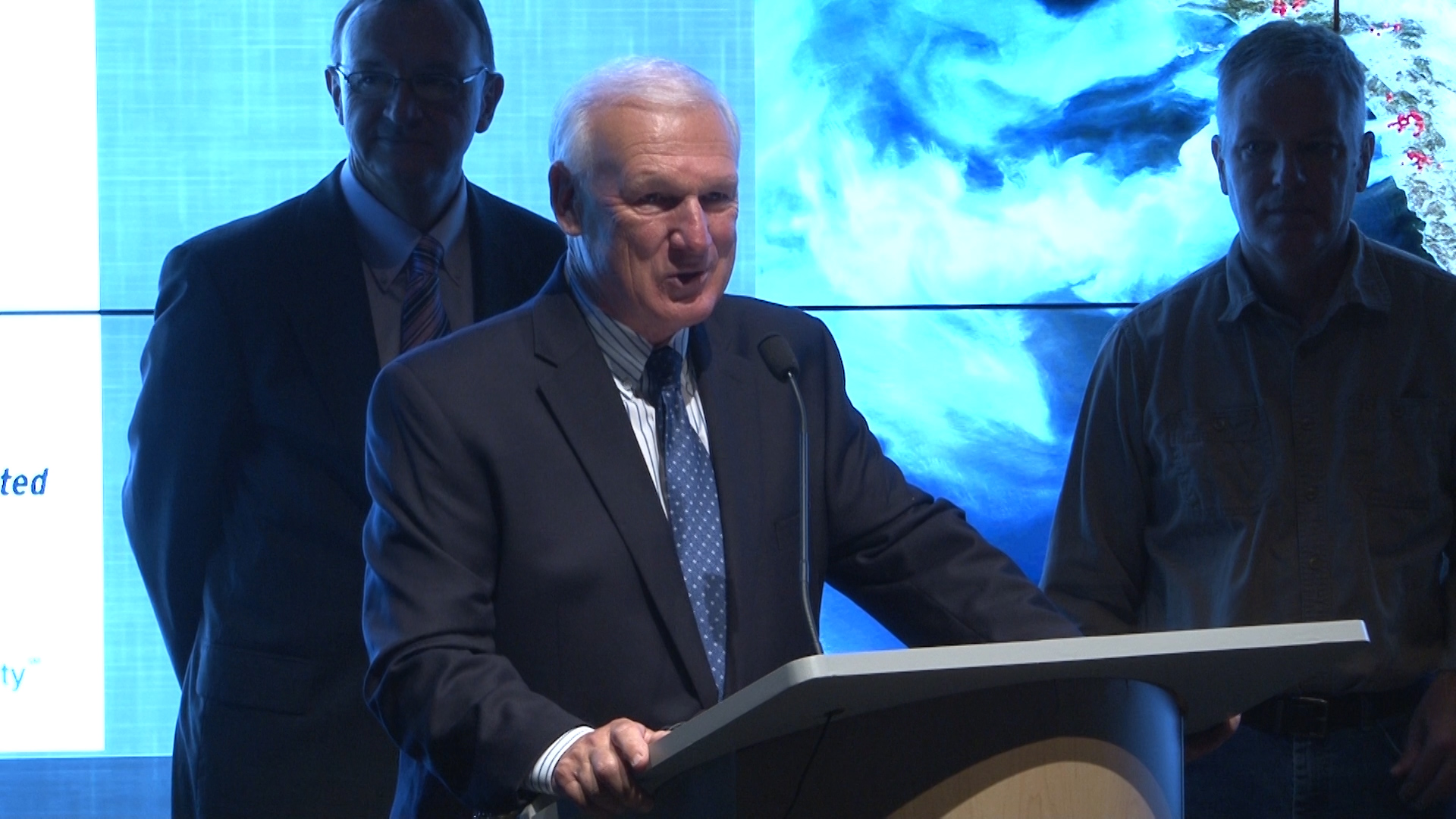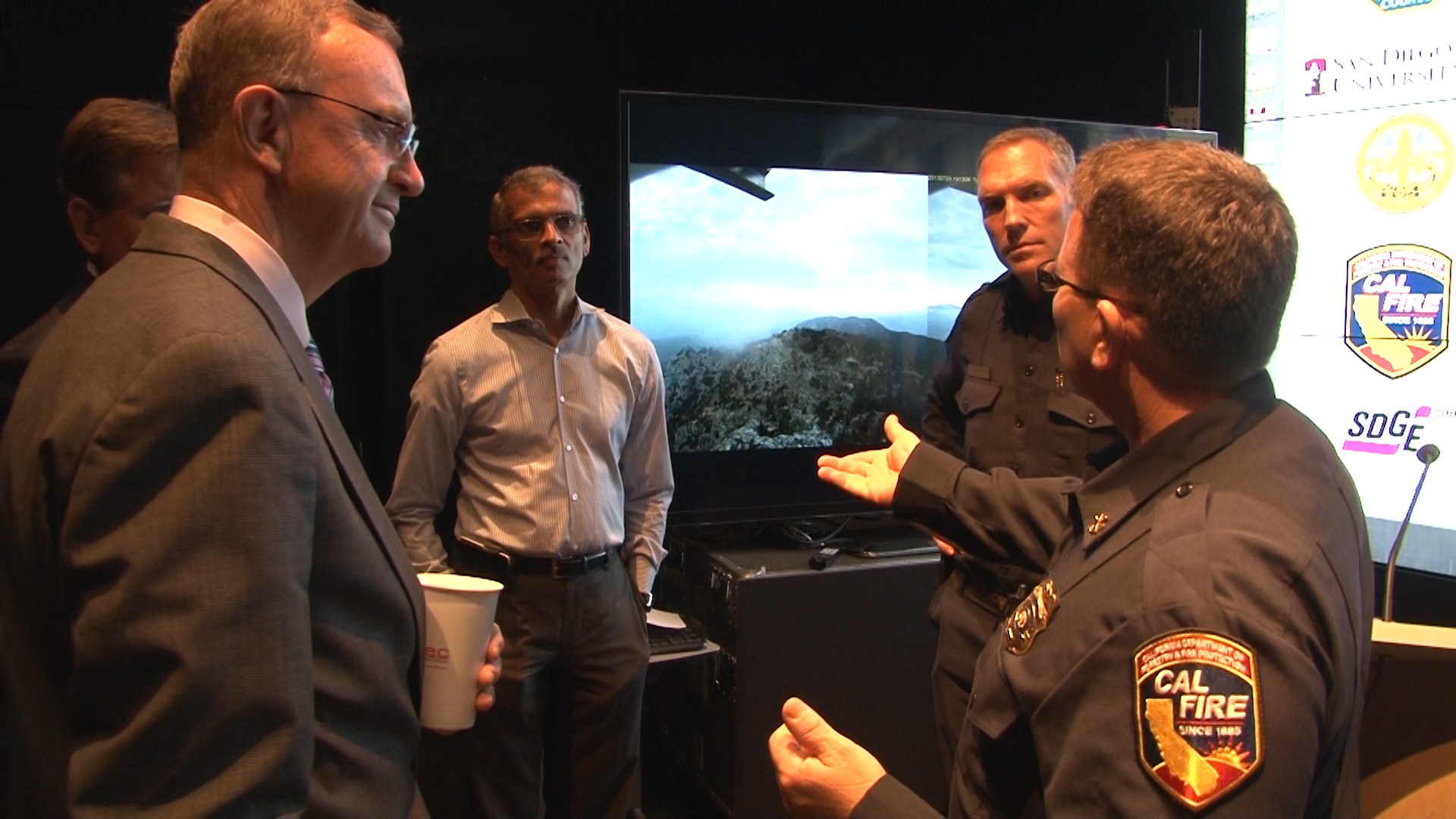New High-Speed Backcountry Fire Station Broadband Network Unveiled
San Diego, Aug. 14, 2013 -- Calit2's Qualcomm Institute at the University of California, San Diego played host today to public and private officials who announced activation of a dramatically expanded public-safety communications network in San Diego County's backcountry.
|
ASAPnet is being developed as part of a larger, multi-purpose and multi-agency enabling network infrastructure that features numerous sensors, including cameras, microweather stations and earthquake monitors, all growing more capable thanks to new and improved Internet applications.
|
The HPWREN backbone of ASAPnet is directed by Hans-Werner Braun, a research scientist at UC San Diego’s San Diego Supercomputer Center who, along with Frank Vernon, a seismologist with Scripps Institution of Oceanography, founded HPWREN in 2000.
Aware of the work being done on ASAPnet due to previous public-safety partnerships with HPWREN, San Diego County Supervisor Ron Roberts in 2012 brought officials with CAL FIRE and the San Diego County Fire Authority together with San Diego Gas & Electric (SDG&E) to talk about expanding an already cooperative effort.
|
“It took us 12 years to get to 15 stations linked to ASAPnet, but just a single additional year to get to 60,” said Braun, who personally conducted much of the field work, aligning mountaintop wireless antennas with those on remote fire stations.
SDG&E has a substantial, and growing, network of remote-sensing equipment in the backcountry, from dozens of microweather stations to cameras monitored by software that can spot the smoke that indicates the start of a fire.
“What we are announcing today is a continuation of San Diego Gas & Electric’s commitment to public safety and the protection of vital sources of energy,” said Michael R. Niggli, SDG&E’s president and chief operating officer. “This partnership in the expansion of ASAPnet is a natural and beneficial fit.”
The majority of the fire stations that directly benefit from ASAPnet are under the command of Chief Thom Porter, CAL FIRE San Diego unit chief and the San Diego County Regional Fire Authority chief.
“Because of their remote locations, most backcountry fire stations have lacked broadband connections common at public safety operations and in many people’s homes,” said Chief Porter. “With ASAPnet operational, our crews can now take advantage of new capabilities, including rip-and-run printers already operating in 27 stations that quickly put information about emergencies such as vehicle accidents into responders’ hands.”
|
During his 2012 “State of the County Address,” Supervisor Roberts launched a major public safety technology initiative with his support of the Next Generation Incident Command System (NICS), which was followed by the release of a free, award-winning emergency app for smart phones/tablets and the ODIN infrared camera system for tracking fire lines through smoke.
“With these partnerships and technologies, we are improving public safety while providing greater tools, and information, to help safeguard the firefighters and emergency response personnel who we all depend on to confront, and manage, San Diego County’s inevitable wildfires,” said Roberts. “The model we are embracing, and the cooperation we are demonstrating, will serve as the model for 21st century disaster planning and response.”
Related Links
HPWREN
San Diego Supercomputer Center
CAL FIRE
San Diego County Fire Authority
County Supervisor Ron Roberts
SDG&E
Qualcomm Institute
Media Contacts
Doug Ramsey, 858-822-5825, dramsey@ucsd.edu; Tim McClain, Supervisor Roberts’ office, (619) 694-6293, tim.mcclain@sdcounty.ca.gov; Nick Schuler, CAL FIRE, (619) 922 4528; Amber Albrecht, SDG&E, (858) 654-1796, aalbrecht@semprautilities.com





